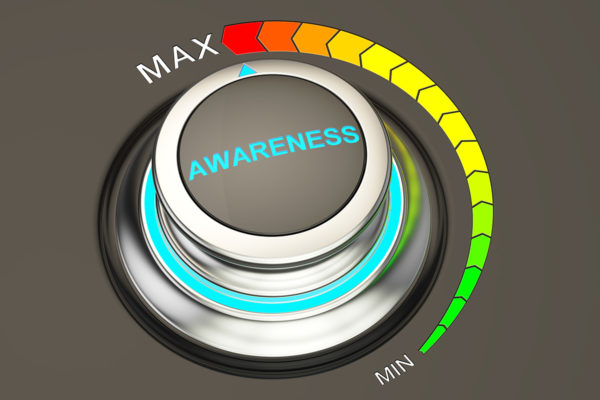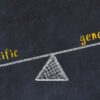Many nonprofits try to increase “awareness” in order to increase the number of new individual donors to their organization.
But not all “awareness” is created equal.
I’ve noticed that there are five distinct types of awareness – and that a couple of the types are far more effective at causing new people to donate.
Type #5 — Awareness your organization exists
This type of awareness comes when potential donors see an organization’s name and logo. It results in very little action and is the least effective form of awareness.
(My basic rule is to never, ever spend money for this type of awareness. For small organizations, even when it’s “free” it’s not worth the time it takes because there are so many more effective ways an organization could be spending its time.)
Type #4 — Awareness of the work your organization is doing
This type of awareness is a little better. Because potential donors see the type of work an organization is doing, the people who are passionate about that work or your beneficiaries are interested.
However, because the focus is on work the organization is already doing, it doesn’t sound like any help is needed. When it doesn’t sound like any help is needed now, fewer people give.
And notice: the person who is now aware has not been asked to give a gift. The organization is completely reliant on the person thinking of giving a gift, seeking out the organization, and then giving a gift. So the chances of them taking action are extremely low.
Type #3 — Awareness of the work that your organization is doing and the person is asked to make a gift to help now
Now things are getting interesting. The person who has just been made aware of what an organization is doing is asked to give a gift. Simply by asking people to give a gift, you’ll increase the number of people who will give.
However, this still won’t produce a lot of gifts, because the focus is on the work the organization is already doing.
Type #2 — Awareness of the problem that your organization works on
This type of awareness usually happens when the media share stories about the problem an organization works on. Think about a news story about the lack of books for local children to read, or a typhoon overseas, or a wetland that’s going to be turned into a shopping mall.
Suddenly, a LOT of people are aware of the problem. And anyone whose heart is touched by the “problem” is emotionally interested in giving a gift to help. Many of those folks will look for organizations that work on that problem and make a gift.
For example, say there’s a story on local news about how children in the area don’t have enough books to read. In that scenario, the local library will receive unsolicited donations from new donors.
Type #1 — Awareness of the problem that your organization works on and the person is asked to make a gift to help now
This is the most effective type of awareness. A potential donor is suddenly aware of a problem that they care about, and in the same moment is asked to give a gift to help.
This type of awareness is reliably the most effective at causing new donors to give donations.
The most successful donor acquisition campaigns are engineered to create this type of awareness:
- The organization purchases (or earns) people’s attention by buying direct mail lists, Facebook ads, radiothons, half-hour TV shows, etc.
- They use that attention to make readers / watchers / listeners aware that there’s a problem happening now
- They then ask the reader / watcher / listener to give a gift to help now.
When you create that magic combination – that a person is aware of the problem and is asked to give a gift to help solve the problem – that’s when you have the biggest successes in acquiring new donors.
Awareness without an Ask is almost always a waste of time and resources.
If you’re a smaller organization, think about this list the next time your organization is asked to consider an idea to “increase awareness.” If you’re going to spend money and/or time, make sure it’s on the types of awareness that are effective at getting new donors.
Steven Screen is Co-Founder of The Better Fundraising Company and lead author of its blog. With over 30 years' fundraising experience, he gets energized by helping organizations understand how they can raise more money. He’s a second-generation fundraiser, a past winner of the Direct Mail Package of the Year, and data-driven.









2 comments on “Not All “Awareness” Is Created Equal”